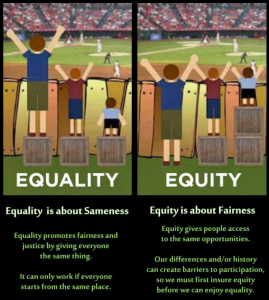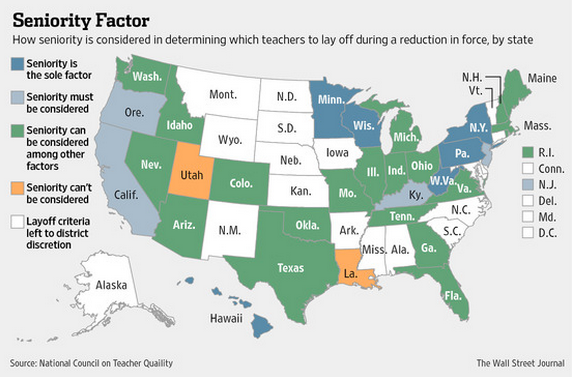The Minnesota Legislature is crisis driven. It has a brief amount of time to address a long list of requests, so every year it tends to prioritize relatively small number of issues that legislators view as being most urgent. Those prioritization decisions are the most impactful decisions they make in any given year.
So, what should the Legislature’s top priority be for the brief 2016 session? Job-creation? Crime? Homelessness? Social issues? Health improvement? Economic competitiveness? Reducing the cost of government to ease tax burdens?
Each legislator has different priorities, but the one issue that will profoundly impact all of those issues for decades to come is Minnesota’s education achievement gap. If we can narrow the achievement gap in our increasingly diverse schools, it will go a long way to making progress on all of the issues just mentioned.
EdWeek summarizes Minnesota’s situation when it comes to the achievement gap:
Overall, Minnesota is a high-performing state academically, but it has some of the highest achievement gaps in the country between white minority students, and between low-income students and their more affluent peers. Those gaps have caught the attention of U.S. Secretary of Education Arne Duncan, who in a January 2011 speech to the Minnesota Chamber of Commerce criticized the state for its “lack of urgency” and its stalled progress in raising the achievement of disadvantaged students.
Well guess what, Arne? Five years later, I still don’t feel that sense of urgency.
Sense of Urgency, Anyone?
For example, we know that retaining effective teachers, and removing ineffective ones, is one of the most important things that can be done to improve student performance. Yet Minnesota is one of a very small number of states that continues a policy of retaining k-12 public school teachers based on seniority, instead of measured effectiveness. This “last in first out” policy makes it makes it difficult to retain high performing young teachers, who disproportionately work in schools serving low-income students. Though a huge majority of Minnesotans agree this policy should be changed, the teacher’s union’s insistence on protecting the seniority-driven status quo prevails at the Legislature year-after-year. That doesn’t sound like a state with a sense of urgency about the achievement gap.
 We also know that research shows that education achievement gaps can be measured in children as young as 9 months old. So, clearly the most vulnerable children need help very early in life, not just at age 4. To catch up, low-income children need extra help as early in life as possible. Yet, some state education leaders recommend heavily subsidizing pre-k services for parents of 4 year olds who can already afford services before we help the thousands of low-income kids under five who currently can’t afford high quality home visiting and early learning programs. If narrowing the achievement gap was truly driving education policymaking, we would be helping those most at-risk kids first and fully.
We also know that research shows that education achievement gaps can be measured in children as young as 9 months old. So, clearly the most vulnerable children need help very early in life, not just at age 4. To catch up, low-income children need extra help as early in life as possible. Yet, some state education leaders recommend heavily subsidizing pre-k services for parents of 4 year olds who can already afford services before we help the thousands of low-income kids under five who currently can’t afford high quality home visiting and early learning programs. If narrowing the achievement gap was truly driving education policymaking, we would be helping those most at-risk kids first and fully.
More k-12 funding is also needed to fund gap-narrowing strategies, such as intensive remedial tutoring. But leaders aren’t acting with sufficient urgency on this front either. As of FY 2013, Minnesota ranked an underwhelming 21st among states in inflation-adjusted spending, at $11,089 per student. Oh to be investing at the level of even sixth ranked Wyoming, which is at $15,700 per student. If Minnesota could just be a little more like Wyoming, we could use the additional $4,600 per student to better support our most gap-vulnerable students.
More Rhetoric Than Reform
I’m not saying that Minnesota is ignoring the achievement gap. It is mentioned ad nauseam at the State Capitol, by people of all political stripes. Discussing the problem is a necessary first step, but it has to lead to reform of the status quo.
Leaders who are truly feeling a sense of urgency about the education achievement gap don’t continue to fire effective young teachers in low-income schools, ignore the plight of its youngest and most vulnerable children, and remain complacent with middle-of-the-pack investments. Both the political right and left can do better.
If we don’t start getting more serious about addressing the k-12 achievement gap, Minnesota won’t have the highly educated workforce it needs to compete in the global economy. As Minnesota’s workforce become less competitive, jobs will be less plentiful and will pay less. When that happens, our state and local revenues will decrease, and our state and local government costs will increase. The resulting fiscal squeeze won’t just hurt those “other people” from different races, ethnicities and neighborhoods; it will hurt all Minnesotans, and our collective future.
That’s why the k-12 achievement gap can’t be considered “just another issue” on a long laundry list of issues. An issue of this magnitude needs to be treated like the Legislature’s top priority. Legislative initiatives to narrow the achievement gap should attract the most intensive focus, the best thinking, the most thoughtful and courageous leadership, the most bipartisan cooperation, and necessary resources. If we don’t get more serious about the achievement gap soon, the state known for an education-driven “Minnesota Miracle” in the 1970s could become known for an education-driven Minnesota Meltdown in the not too distant future.
Note: This post was also selected for MinnPost’s Blog Cabin feature.
Disclosure: In addition to being a blogger expressing personal opinons, the author is a communications consultant. Among many other clients, he works with a nonprofit that advocates for income-targeted investments in pre-k early education. As with all blog posts, this reflects solely the author’s personal opinion.

 Anybody who has followed my lunatic rantings knows that I’m an unabashed wealth redistributin’, Wall Street regulatin’, minority rightsin’, carbon tradin’, Keynesian spendin’, Medicare-for-Allin’, tree-huggin’, consumer protectin’, Pentagon cuttin’, infrastructure rebuildin’, union supportin’, monopoly bustin’, education investin’ liberal.
Anybody who has followed my lunatic rantings knows that I’m an unabashed wealth redistributin’, Wall Street regulatin’, minority rightsin’, carbon tradin’, Keynesian spendin’, Medicare-for-Allin’, tree-huggin’, consumer protectin’, Pentagon cuttin’, infrastructure rebuildin’, union supportin’, monopoly bustin’, education investin’ liberal. A talented young teacher who is successfully improving kids’ learning automatically should be mandated to be the first to be fired? That’s putting kids first? That’s pro-teacher? That’s pro-education? That’s respecting the teaching profession? That’s helping struggling low-income school districts, who have a disproportionate share of younger teachers? That’s liberal?
A talented young teacher who is successfully improving kids’ learning automatically should be mandated to be the first to be fired? That’s putting kids first? That’s pro-teacher? That’s pro-education? That’s respecting the teaching profession? That’s helping struggling low-income school districts, who have a disproportionate share of younger teachers? That’s liberal?